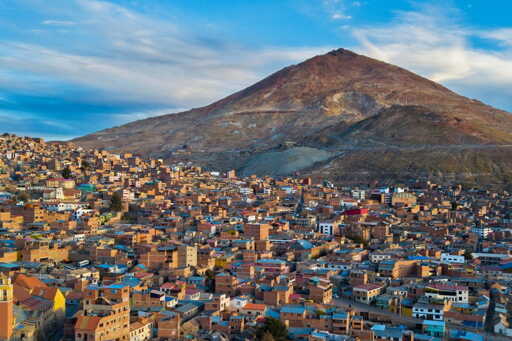At about 4,800 meters, or nearly 15,800 feet, above sea level, Cerro Rico towers over the city of Potosí, in Bolivia’s southern highlands. Famous for its vast silver reserves, Cerro Rico — whose name means “rich mountain” in Spanish — almost single-handedly financed the Spanish Empire. In 1656, author Antonio de León Pinelo claimed that enough silver had been extracted by Indigenous and African slaves to build a bridge from Bolivia to Madrid. At its peak in the early 17th century, Potosí was one of the world’s most populated cities, bigger even than London and Milan. UNESCO World Heritage Site, today the mountain is still exploited by miners associated with 54 cooperatives for zinc, lead, tin and silver, and continues to fuel the city’s economy. Now, riddled with tunnels after nearly 500 years of informal mining, the upper part of the mountain is on the brink of collapse, threatening the approximately 180 families who live on the mountain and the roughly 10,000 miners working there, the majority of them Indigenous Quechua. “All the houses are cracked because everything is sinking,” Silvia Mamani Armijo, 34, who lives on the mountain with her three young children and works as a mine tunnel guard, told Mongabay. “During the rainy season this whole area can collapse,” she added, pointing to the cracks in the adobe walls of several houses near hers. “So many families could die.” Small cave-ins dot Cerro Rico in the area around Basilio Vargas’ childhood home. Image by Benjamin Swift. Small…This article was originally published on Mongabay
From Conservation news via this RSS feed


